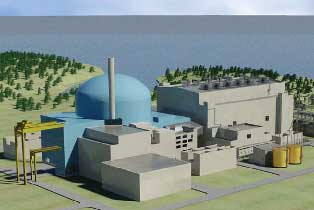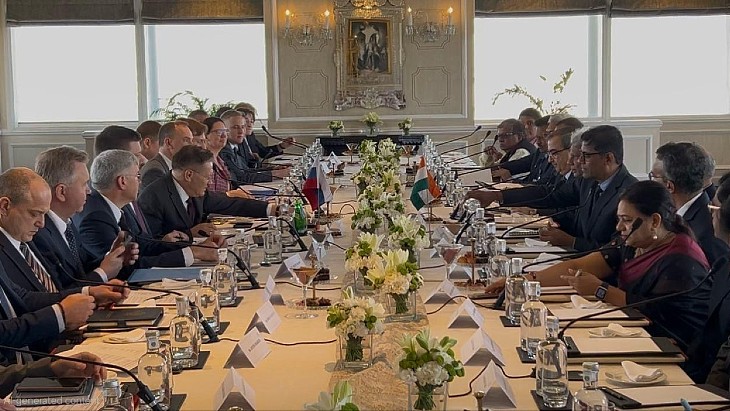Areva still needs to convince the US Nuclear Regulatory Commission (NRC) that some aspects of the digital instrumentation and control systems for its EPR reactor design meet the regulator's requirements.
 |
Areva's vision of EPR in America (Image: Areva) |
The US version of the EPR design currently being built in Finland and France is undergoing design certification by the NRC which, if granted, would clear the way for reactors of that generic type to be built anywhere in America subject to site-specific licensing procedures and the issue of a combined construction and operating licence (COL). Four such applications have already been submitted to the regulator.
The areas of concern identified in the latest letter from the NRC to Areva centre on design complexity and independence issues: each safety division within the system must be able to perform its function without relying on data from outside and must also be protected from adverse external influences. Areva needs to demonstrate that these issues have been addressed to the regulator's satisfaction, and show that data exchange between systems will not adversely affect safety.
Independence between routine reactor control systems and the systems that maintain safety in unusual conditions is needed because some of the safety systems protect against the failure of control systems. For that reason it should be impossible for them to fail together. The independence of systems in the EPR design has been brought into question by regulators before. In November 2009, British, French and Finnish regulators jointly urged Areva to revise the reactor's control systems because of a high degree of complex interconnectivity.
NRC's letter to Areva, dated 23 July, is a response to correspondence from Areva earlier in the month. The regulator acknowledges that Areva is making progress in addressing the issues: the company has already described proposed design changes intended to reduce the level of complexity as well as to address some of the intercommunication issues. However, Areva has notified the NRC of some areas where its feels that design changes are not advisable, and these appear to be the areas which the regulator feels may not meet its standards.
In addition, "significant" architectural changes proposed by Areva to address regulatory concerns about what NRC describes as "highly complex" design architecture will be expeditiously reviewed by the regulator to determine if they resolve that issue.
Although NRC says it is working with closely with Areva towards a resolution of the issues, the impact on the overall schedule for the design certification procedure will not be clear until Areva has provided more details on its plans for instrumentation and control system revisions. At present, the certification is scheduled for final completion in mid-2012 with the current stage, the second phase of the safety review, pencilled in for completion in November 2010.
Researched and written
by World Nuclear News





_70761.jpg)
_55530.jpg)
_42372.jpg)
_76087_55556.jpg)




